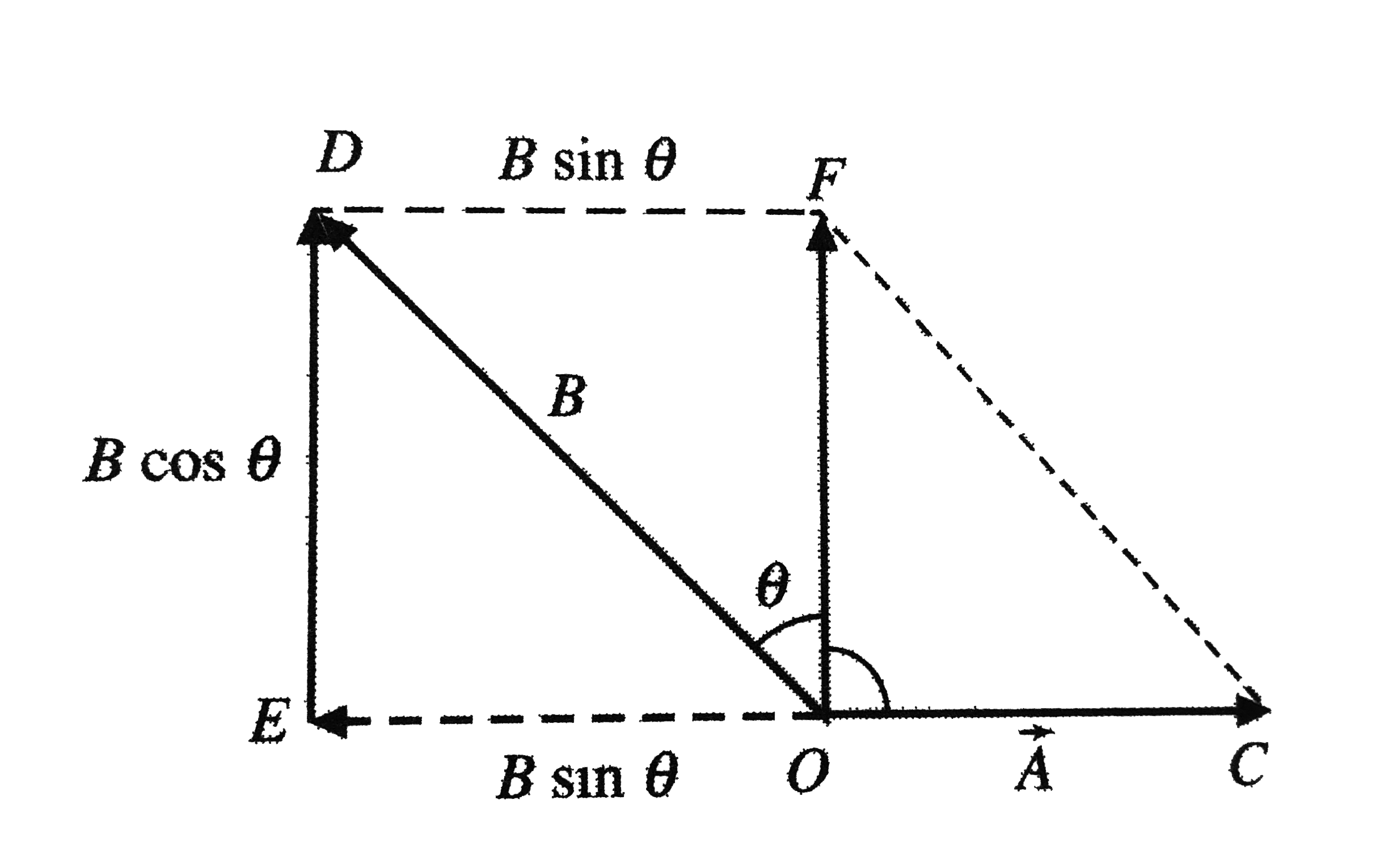A vector →A is along the positive z-axis and its vector product with another vector →B is zero, then vector →B could be :
ˆi+ˆj
4ˆi
ˆi+ˆk
−7ˆk
The correct Answer is:D
To solve the problem, we need to determine which vector →B can produce a zero vector when crossed with the vector →A, which is along the positive z-axis.
1. Define the Vector →A:
Since →A is along the positive z-axis, we can represent it as:
→A=n^k
where n is a scalar (magnitude of the vector) and ^k is the unit vector in the z-direction.
2. Understanding the Cross Product:
The cross product →A×→B is zero if and only if →A and →B are parallel or if either vector is zero. This means that →B must also have no component in the z-direction.
3. Evaluate Each Option:
We will evaluate each option to see if it satisfies the condition of being parallel to →A or having no z-component.
- Option 1: →B=^i+^j:
→B=1^i+1^j+0^k
Calculate →A×→B:
→A×→B=∣∣
∣
∣∣^i^j^k00n110∣∣
∣
∣∣=^i(0−n)−^j(0−n)+^k(0−0)=−n^i+n^j
This is not zero, so option 1 is incorrect.
- Option 2: →B=4^i:
→B=4^i+0^j+0^k
Calculate →A×→B:
→A×→B=∣∣
∣
∣∣^i^j^k00n400∣∣
∣
∣∣=^i(0−0)−^j(0−4n)+^k(0−0)=4n^j
This is not zero, so option 2 is incorrect.
- Option 3: →B=^i+^k:
→B=1^i+0^j+1^k
Calculate →A×→B:
→A×→B=∣∣
∣
∣∣^i^j^k00n101∣∣
∣
∣∣=^i(0−0)−^j(0−n)+^k(0−0)=n^j
This is not zero, so option 3 is incorrect.
- Option 4: →B=−7^k:
→B=0^i+0^j−7^k
Calculate →A×→B:
→A×→B=∣∣
∣
∣∣^i^j^k00n00−7∣∣
∣
∣∣=^i(0−0)−^j(0−0)+^k(0−0)=0
This is zero, so option 4 is correct.
Conclusion:
The vector →B that satisfies the condition →A×→B=0 is:
→B=−7^k
Since →A is along the positive z-axis, we can represent it as:
→A=n^k
where n is a scalar (magnitude of the vector) and ^k is the unit vector in the z-direction.
The cross product →A×→B is zero if and only if →A and →B are parallel or if either vector is zero. This means that →B must also have no component in the z-direction.
We will evaluate each option to see if it satisfies the condition of being parallel to →A or having no z-component.
→B=1^i+1^j+0^k
Calculate →A×→B:
→A×→B=∣∣
∣
∣∣^i^j^k00n110∣∣
∣
∣∣=^i(0−n)−^j(0−n)+^k(0−0)=−n^i+n^j
This is not zero, so option 1 is incorrect.
→B=4^i+0^j+0^k
Calculate →A×→B:
→A×→B=∣∣
∣
∣∣^i^j^k00n400∣∣
∣
∣∣=^i(0−0)−^j(0−4n)+^k(0−0)=4n^j
This is not zero, so option 2 is incorrect.
→B=1^i+0^j+1^k
Calculate →A×→B:
→A×→B=∣∣
∣
∣∣^i^j^k00n101∣∣
∣
∣∣=^i(0−0)−^j(0−n)+^k(0−0)=n^j
This is not zero, so option 3 is incorrect.
→B=0^i+0^j−7^k
Calculate →A×→B:
→A×→B=∣∣
∣
∣∣^i^j^k00n00−7∣∣
∣
∣∣=^i(0−0)−^j(0−0)+^k(0−0)=0
This is zero, so option 4 is correct.
The vector →B that satisfies the condition →A×→B=0 is:
→B=−7^k
Similar Questions
A vector →F1 is along the positive X-axis. If its vectors product with another vector →F2 is zero then →F2 could be
View SolutionA vector →F1 is along the positive X-axis. its vectors product with another vector →F2 is ? where →F2 is along Y-axis
View SolutionThe magnitude of the vectors product of two vectors →Aand→B may be
View SolutionThe resultant of two vectors →A and →B is perpendicular to the vector →A and its magnitude is equal to half of the magnitude of the vector →B. Find out the angles between →A and →B.
 .
.
View SolutionThe magnitude of the vector product of two vectors →A and →B may not be:
View SolutionThe magnitude of the vectors product of two vectors ∣∣→A∣∣and∣∣→B∣∣ may be
View SolutionWrite the projection of vector →a on →b.
View SolutionResolved part of vector →a and along vector →b is →a1 and that prependicular to →b is →a2 then →a1×→a2 is equl to
View SolutionFind the angle between unit vector →a and →b so that √3 →a - →b is also a unit vector.
View SolutionFind the angle between unit vector →a and →b so that √3 →a - →b is also a unit vector.
View Solution
